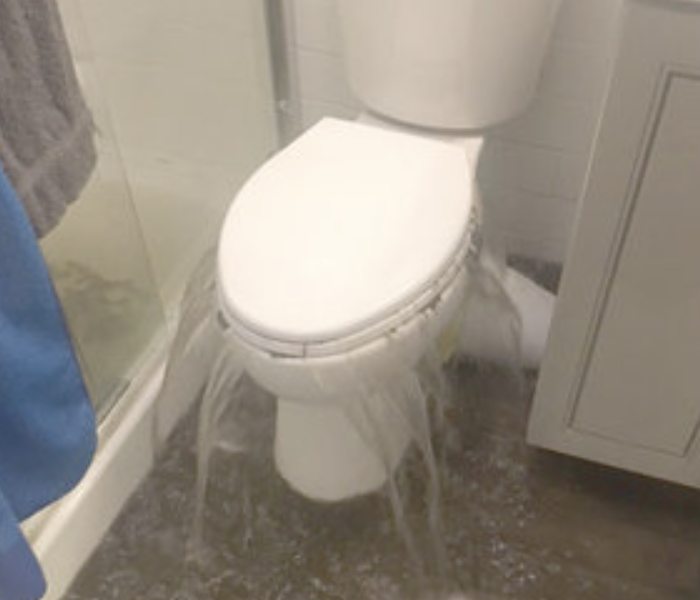Leave it to us...
8/23/2021 (Permalink)
If you’re dealing with anything other than a large incursion, you understandably may be considering handling the cleanup and drying yourself to save money or time. The problem with doing it yourself is that cleaning up and recovering from water damage isn’t always as straightforward as it seems.
Which is why we have highlighted 3 key things you need to be aware of when addressing water damage from a minor clean water incursion or Category 1 water loss.
1) Know What You’re Dealing With
Water damage can be caused by three different types of water, including:
I. Clean water (Category 1)
II. Gray water (Category 2)
III. Black water (Category 3)
It’s important to understand the differences between all three categories because Category 2 and Category 3 water will present health risks to your employees, customers and loved ones. All three categories need to be handled differently.
The most common sources of clean water damage typically occur from a pipe, water heater, steam lines or even rainwater. The basic rule of thumb is that it should look and smell like tap water. Recovering from Category 2 or Category 3 water damage or heavy flooding involves additional considerations.
A Category 2 water loss, aka “grey water” refers to a source of water that contains a significant degree of chemical, biological, or physical contaminants and causes discomfort or sickness when exposed or consumed. This type of water damage carries microorganisms and nutrients of microorganisms. Category 3 water loss involves water that is grossly contaminated and can contain pathogenic, toxigenic, or other harmful agents. Such water may carry silt, organic matter, pesticides, heavy metals, regulated materials, or toxic organic substances.
2) Make Sure You Investigate All of the Damage
The challenging thing about recovering from water damage from something like a broken pipe or rainwater incursion is that you can typically only see a small part of the actual damage. The majority of the moisture is often hidden in walls, and it’s critical to identify and dry all of the affected areas to prevent a different issue, mold. The methods for dealing with damage to walls depend on the type of materials and what’s behind those materials. Drywall can often be salvaged, when you respond quickly to said damage.
SERVPRO of Midtown Manhattan uses moisture meters that allow us to assess structural integrity. If the integrity checks out, then our drying approach will depend on wall contents. If the wall has insulation, we will use flood cuts. If there is no insulation, then usually the best method is to create access holes. And if you’re dealing with a firewall, we will use staggered cuts. We may even need to remove your base molding and flooring materials. If your floors are carpet, we may be able to pull back the wet area and dry it using a fan.
3) Establish Proper Airflow and Keep the Windows Closed When Drying
Once moisture is discovered, your first instinct may be to open windows to help with the drying process. However, it may not be your best move. For example, if your building is mechanically ventilated, the systems need constant pressure levels to work correctly. You also want to avoid excess coolness or heat and humidity, or you may end up complicating the drying process.
Once we’ve pulled away wet materials and established holes or cuts in the wall as needed, we will begin placing our drying equipment. To prevent mold, make sure all the layers and materials are dry before putting everything back together.
The Big Dry Out
If you’ve experienced water damage, hopefully you’re dealing with clean water and a small area. No matter what type of water damage you’re dealing with, don’t hesitate to call us.






 24/7 Emergency Service
24/7 Emergency Service
